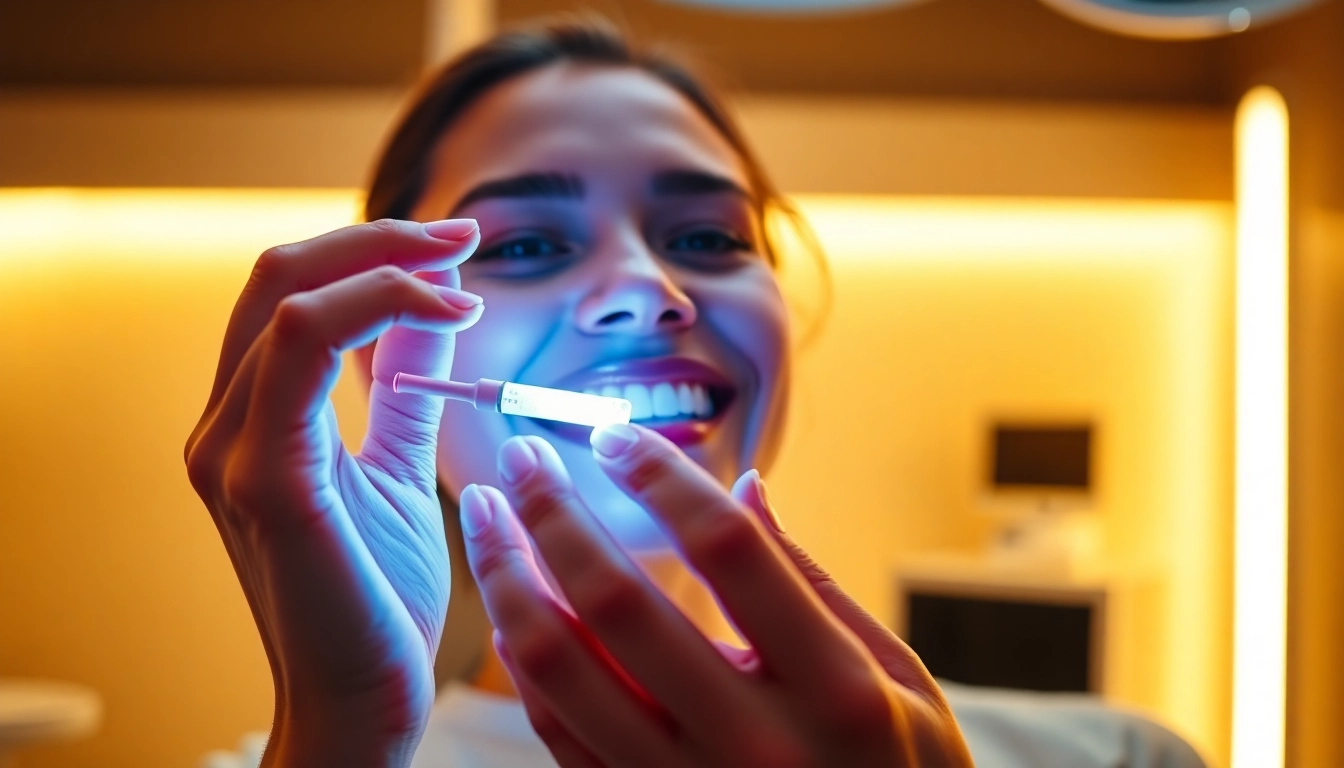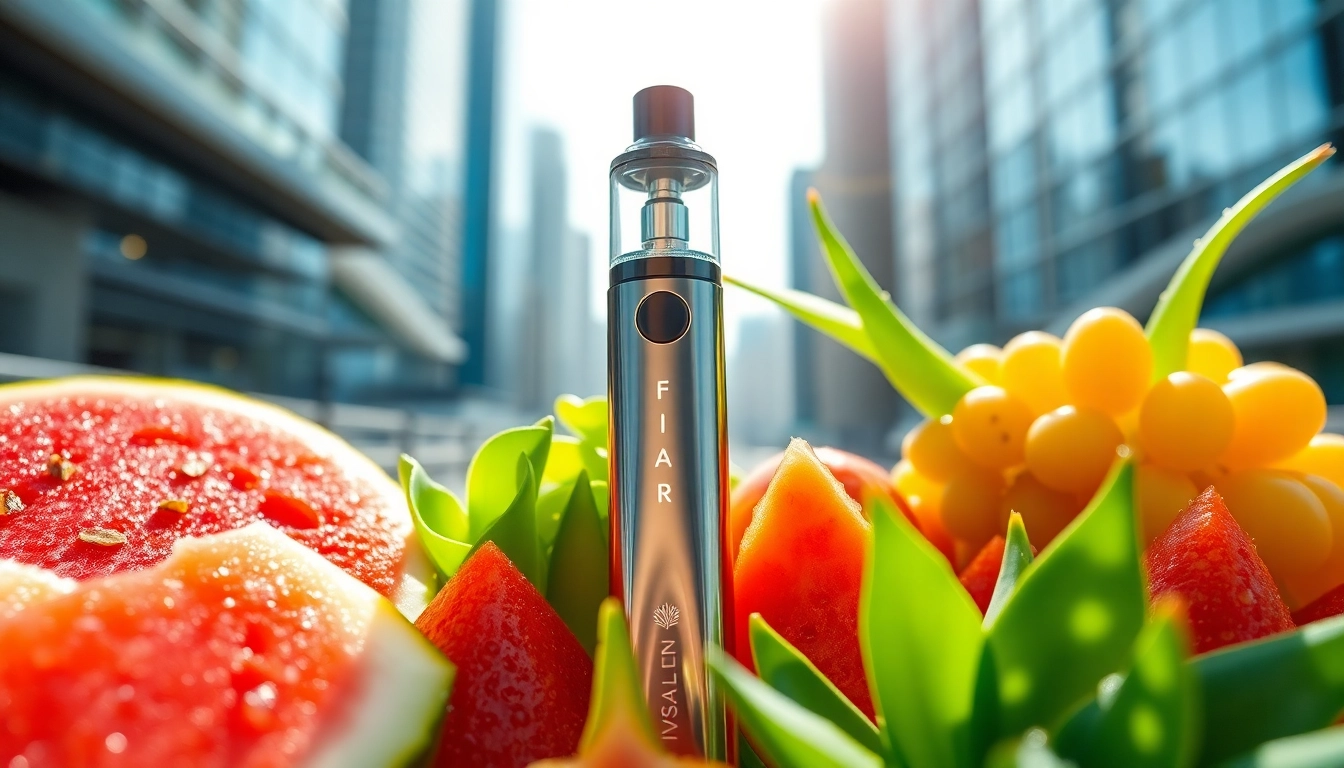Understanding Teeth Whitening Kits
What is a Teeth Whitening Kit?
A teeth whitening kit is a collection of products designed to lighten the color of your teeth, removing stains and discoloration caused by factors such as food, beverages, smoking, and aging. These kits come in various forms, including strips, gels, toothpastes, and trays, to cater to different preferences and needs. They offer an accessible solution for those looking to achieve a brighter smile conveniently from the comfort of their own home. Whether you’re preparing for a special occasion or simply want to enhance your daily appearance, a teeth whitening kit can be an effective option.
How Do Teeth Whitening Kits Work?
Teeth whitening kits typically utilize bleaching agents that penetrate the enamel and help lift stains. The most common active ingredients found in these products are hydrogen peroxide and carbamide peroxide. These compounds release oxygen molecules, allowing them to break apart the pigments that discolor your teeth. Depending on the method and strength of the whitening agent, results may vary, with some kits promising noticeable whitening within a few days, while others may take weeks for maximum effect.
Common Ingredients in Teeth Whitening Kits
When evaluating teeth whitening kits, it’s crucial to understand the key ingredients and their roles:
- Hydrogen Peroxide: This is the most powerful whitening agent available over the counter. It effectively penetrates tooth enamel to break down stains.
- Carbamide Peroxide: This compound is a stable form of hydrogen peroxide and is often used in gel form. It takes longer to work compared to hydrogen peroxide but is gentler on sensitive teeth.
- Whitening Abrasives: Ingredients like silica and calcium carbonate help physically scrub stains from the surface of the teeth.
- Flavoring Agents: Many kits include flavoring agents to enhance the user experience, making the whitening process more pleasant.
Benefits of Using a Teeth Whitening Kit
Improved Aesthetics and Confidence
One of the most significant benefits of using a teeth whitening kit is the improvement in aesthetics. A bright, white smile can enhance your overall appearance and boost your self-esteem. Research indicates that people often associate a whiter smile with attractiveness, youth, and health. This newfound confidence can positively impact both personal and professional interactions, as individuals tend to smile more freely and engage better when they feel good about their appearance.
Cost-Effectiveness Compared to Professional Whitening
Professional whitening treatments, although highly effective, can be quite expensive, often exceeding hundreds of dollars per session. In contrast, home whitening kits are significantly more budget-friendly, allowing individuals to achieve similar results at a fraction of the cost. While results may vary compared to professional treatments, many users find that over-the-counter kits provide satisfactory and noticeable whitening without breaking the bank.
Convenience of At-Home Solutions
The convenience factor cannot be overstated when it comes to teeth whitening kits. Unlike professional treatments that require scheduling appointments and traveling to a dental office, at-home kits can be used whenever it suits you. Whether you’re lounging at home, getting ready for a night out, or even commuting, simply pop in a mouth tray or apply strips for a few minutes. This flexibility makes it easier for anyone to incorporate teeth whitening into their daily routine without hassle.
Choosing the Right Teeth Whitening Kit
Assessing Your Specific Needs
Before choosing a teeth whitening kit, assess your specific needs and goals. Consider factors such as the severity of your staining, any dental sensitivity, and your desired level of whitening. If you have sensitive teeth, opt for milder formulas that limit potential discomfort while still being effective. For those with more significant discoloration, stronger formulas may provide quicker results. Keep in mind the end goal; a kit that aligns with your expectations will enhance your satisfaction with the process.
Reading Labels: What to Look For
When shopping for a teeth whitening kit, it’s essential to read the labels carefully. Look for the concentration of active ingredients, as higher concentrations often result in faster and more dramatic results. Check for additional components such as desensitizing agents if you have sensitive teeth. Confirm that the product has been approved by dental associations or regulatory bodies, as this can assure you of its safety and effectiveness. Additionally, consider the delivery method – strips, gels, or trays – that best fits your comfort and lifestyle.
Comparing Popular Teeth Whitening Kits
With the market filled with numerous teeth whitening options, performing careful comparisons can help you make an informed choice. Popular kits include:
- Whitestrips: Convenient and easy to use, these adhesive strips are designed to mold to your teeth and typically brighten teeth in a matter of days.
- Whitening Trays: Often custom-fit, these systems use a gel that is applied within the trays, allowing for comprehensive coverage of all teeth.
- Whitening Pens: Ideal for on-the-go, these pens provide a quick application of a whitening gel directly to the teeth.
- Toothpaste with Whitening Properties: While usually milder and slower in results, incorporating a whitening toothpaste into your daily regimen can help maintain your smile.
Best Practices for Using Teeth Whitening Kits
Preparation and Application Tips
To achieve the best results from your teeth whitening kit, proper preparation and application are vital. Start by brushing and flossing your teeth to remove plaque and food particles, ensuring an even application of the whitening agent. Follow the manufacturer’s instructions precisely regarding the duration and frequency of use. Overusing whitening products can lead to sensitivity or damage to the enamel, so it’s best to adhere to the recommended guidelines.
Avoiding Common Mistakes
Many individuals inadvertently sabotage their teeth whitening efforts by making common mistakes, such as:
- Using expired or improperly stored products can significantly diminish results.
- Neglecting oral hygiene can allow plaque to interfere with the whitening process.
- Overuse of whitening products may lead to increased sensitivity or gum irritation.
Avoid these pitfalls by investing time into learning the proper usage methods and maintaining overall dental care during the whitening process.
Post-Whitening Care for Lasting Results
After achieving your desired level of whiteness, it’s essential to maintain your smile. Avoid foods and beverages known to stain teeth, such as coffee, red wine, and dark berries, especially in the first few days post-treatment. Implement a consistent oral hygiene routine that includes brushing at least twice a day, flossing, and using mouthwash. Consider using a whitening toothpaste to help preserve the effects of your treatment. For tips specific to maintaining whitening, consult your dentist for tailored advice.
Measuring Results: When to Expect Change
How to Track Your Whitening Progress
Monitoring your whitening progress is crucial in determining whether your chosen kit is effective. Take before and after photographs under consistent lighting to objectively assess the changes. Some kits may include a color guide to help gauge improvements. Be patient, as discoloration can vary by individual; although some may see results within days, others may take weeks to achieve their desired shade of white.
Signs It’s Time to Reapply Your Teeth Whitening Kit
After completing a whitening cycle, you may notice your results fading over time, especially after consuming stain-inducing substances. Reapplication is advisable if you see yellowing or dullness returning. Every kit has specific recommendations for how often to reapply, typically ranging from every few months to once a year, depending on the type of product used and personal oral habits.
Maintaining Your Bright Smile After Treatment
To keep that bright smile post-treatment, maintain regular visits to the dentist for professional cleanings—usually every six months. Additionally, continue following the best maintenance practices outlined earlier, including a disciplined oral hygiene routine and avoiding habits known to cause staining. Regular touch-up applications of whitening treatment can also help in ensuring the longevity of your results, allowing your smile to stay vibrant and radiant.




